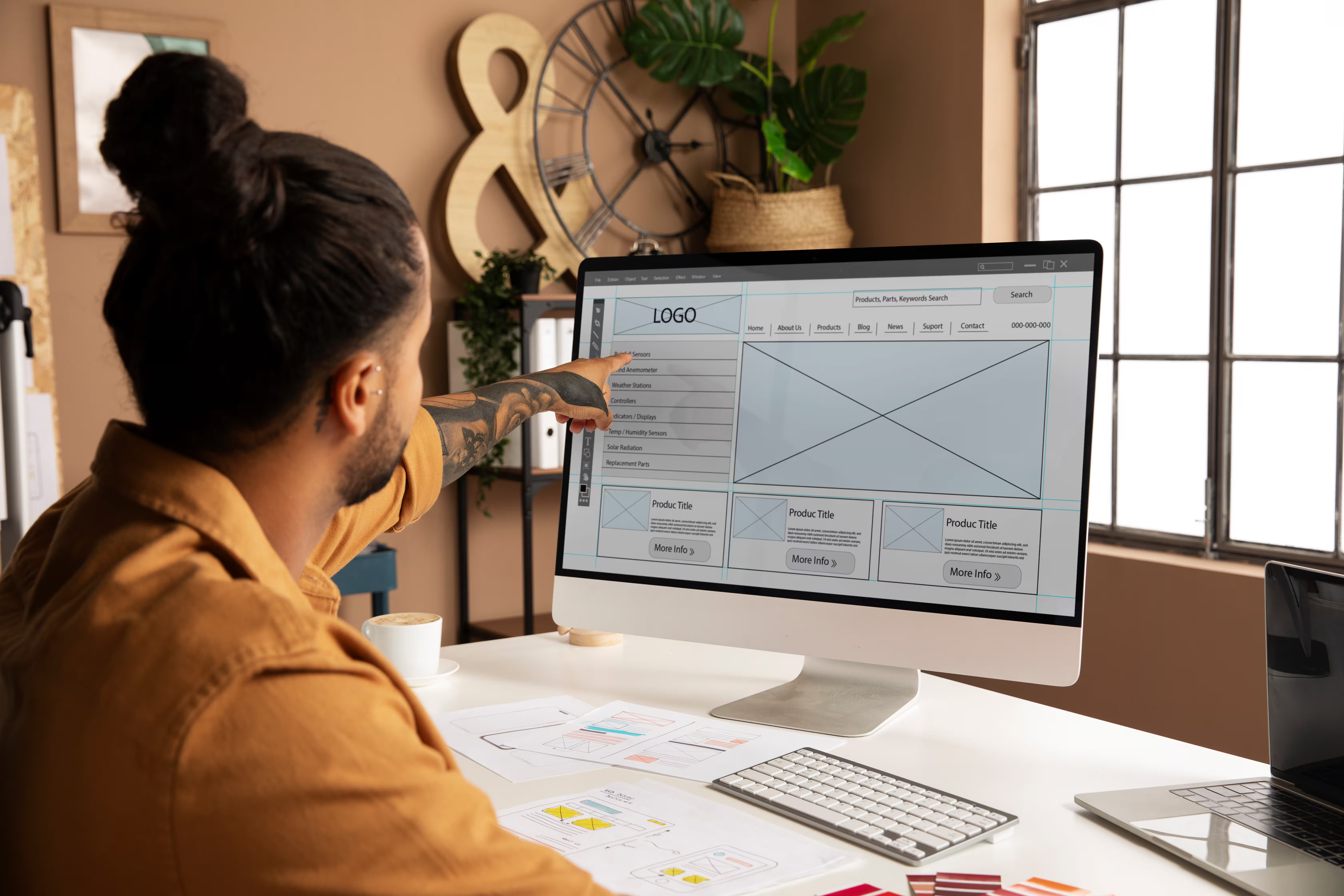Here's the exciting part: Webflow has extended some amazing collaborative features that are game-changers. Let's dive into the world of design and development collaboration possibilities and take a closer look at the magic Webflow brings to the table.


Importance of collaboration in web design and development
Before navigating the details of Webflow’s collaborative capabilities, let's appreciate why teamwork is so important in web design and development. Here's what makes it so important:
Harnessing a lot of skills
Web projects are complex tasks that require a variety of different skills. The work includes graphic design and UX design, from front-end to back-end development content creation and quality assurance. Working with professionals from all sectors guarantees equal dedication toward each component of your project. It’s like building a dream team, where every player brings their specific skills and experiences to the fore.
Accelerating project timelines
In a world of digital, time is usually critical. Customers and users require prompt delivery of websites and web applications. In collaborative workflows, participants can be engaged in various components of a project at once. For example, while designers work on the user interface, developers can write backend code, thus shortening project schedules and quickening the completion of this product.
Quality assurance and error mitigation
Web projects are often prone to errors and oversight – regardless of how well-planned you make them. Teamwork can assist in the timely detection and correction of problems. More pairs of eyes, looking at the project from various perspectives, improve quality assurance. This process not only detects bugs but also ensures that the design meets the expectations of users and brand standards. Collaboration embodies quality control.
Nurturing creative synergy
Web design and development are as much art forms as they are technological processes. Collaborative brainstorming sessions and idea sharing make for creative synergy. Individuals operating in teams can motivate one another and contribute to the development of creative thought that results in novel solutions, non-traditional design decisions as well as distinct user experiences. Working together allows outside-the-box thinking, leading to unique web projects.
Shared responsibility and accountability
In group work, team members divide the project success burden. The stakes are high for everyone involved, and a higher level of commitment is fostered as an extension. When people work alone, responsibility tends to diffuse. On the other hand, cooperation emphasizes team success and requirements to fulfill the objectives of any project.
Now, let's check out how Webflow's collaborative environment empowers teams to harness these advantages.
Webflow’s collaborative environment

Webflow offers a comprehensive suite of tools and features that foster a collaborative environment for web design and development teams. Here are some key elements:
Real-time editing and collaboration tools for designers and developers
By means of real-time editing, Webflow allows more than one member of a team to work collaboratively on the same project. Developers and designers can work on changes simultaneously, viewing them in real time. This functionality significantly improves collaboration and eliminates the endless time spent on back-and-forth conversations.
Simultaneous editing and version control
The collaboration Webflow features have a version control system as one of its pillars. It is possible for several people to manage a single project at the same time without having data loss and conflicts. With Webflow, you can keep an eye on edits and roll back to previous versions, guaranteeing the utmost integrity of the project during the development process.
Permissions and access controls
The integrated commenting and feedback system allows for straightforward communication in Webflow. Feedback can be facilitated by team members who may respond directly within the tool, saving time in addressing issues that need clarification and design selections. The above feature makes communications easy, and all project-related discussions are channeled into one place.
Commenting and feedback
Webflow addresses the problem of communication and collaboration with an integrated commenting system. As team members are already on the platform, they can give feedback directly, and rapid improvements can be made regarding clarifications or requirements as well as more efficient discussions about design decisions. This aspect facilitates communication and ensures that all project discussions remain within the same space.
Design handoff and developer collaboration
Webflow makes it simple to move from design into development. Designers use responsive design techniques, and developers can then easily transform them into websites that work. Through this handoff process, everything is smooth to enable the faithful implementation of the design vision.
Integrations with external collaboration tools
Webflow knows that collaboration does not end within the walls of its platform, so it supports access to the leading project management and communication tools to upgrade the entire collaboration process. You can then integrate your workflow in Webflow with platforms such as Slack and Trello, among others.
Streamlining workflows with team libraries
The collaborative environment with such a design system calls for its consistency. Through the team libraries, Webflow users are capable of creating and managing shared component styles as well as assets. This guarantees that your team will have a consistent design system and eliminate inconsistencies, increasing productivity.
Best practices for collaborative web design

That said, integrating Webflow’s collaborative capabilities into your workflow is just the beginning. To maximize the benefits, consider the following best practices:
- Effective communication: Keep open channels of communication with your team. Successful collaboration requires clear and succinct communication.
- Regular project updates and check-ins: Keep track of project development with frequent updates and monitoring. Take care of problems quickly to maintain project continuity.
- Utilizing collaborative tools beyond Webflow: Although Webflow provides a powerful collaborative environment, do not be afraid to utilize other tools that might take your teamwork even deeper. Customize your stack to suit the needs of your team.
Final thoughts
For successful Webflow development and design projects, collaboration is a foundation. Webflow’s collaborative tools enable teams to work smoothly in a common direction, which impacts their efficiency and quality of projects. By using real-time editing, version control, permissions, and integrations, you can simplify your workflow to a whole new level.
Frequently asked questions
Can multiple team members edit the same project simultaneously in Webflow?
Yes, Webflow supports real-time editing, allowing multiple team members to work on the same project simultaneously.
How does Webflow handle version control?
Webflow enables users to track changes and revert to previous versions to maintain project integrity.
What types of permissions can I assign to team members in Webflow?
Webflow allows users to set granular permissions and control access based on roles and responsibilities within the team.




















